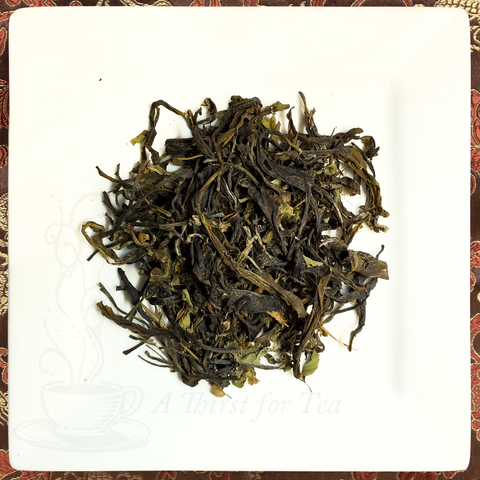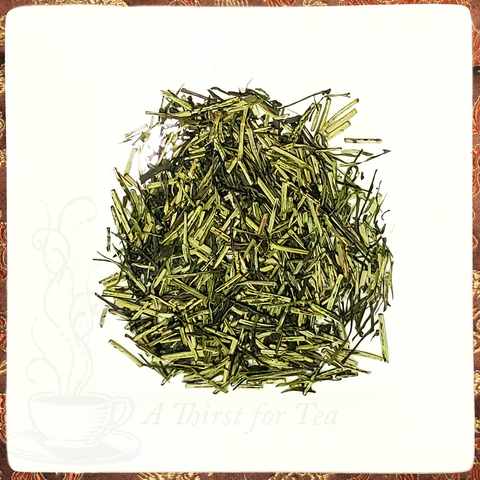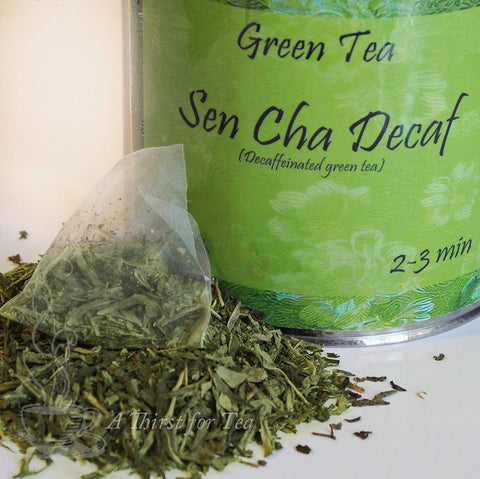Sakura Sencha
$6.99 $9.98Sakura Sencha
$6.99 $9.98- Gallery
- Description
- Sakura Sencha Background
- Sakura Sencha Preparation
- Reviews
The blooming of cherry blossoms called "sakura" across Japan marks the end of winter and the coming of warm weather and merriment. Our Sakura Sencha is a delightful blend of sencha and real Japanese sakura blossoms and leaves, which gives it a more flavorful and aromatic experience than just including the blossoms alone. The sweet taste and the aroma of sakura compliment the smooth, rich taste of the sencha and is reminiscent of Sakura Mochi, a traditional springtime treat. Enjoy the taste of eternal spring with this blend of traditional Japanese favorites.
Japan produces approximately 90,000 tons of green tea each year, but only exports about 1-2 percent of its total production. Recently Japan has also become a leading importer of the finest teas in the world. Over half of the yearly production of Japanese tea comes from Shizuoka-prefecture. The production of green tea entails the steaming of the green leaf and hand or machine rubbing. The teas are then pan-fired or basket fired which gives them a distinctive appearance and glossy look and feel. These methods give a taste that is light in color but rich and full in the cup.
Variations in the steaming process produce different flavor profiles of Sen Cha Japanese Green Tea. Chumushi means "medium steaming" (about one minute) which results in a tea with a bold taste and sweet aftertaste with remarkable green fragrance. This is the tea attracting the Japanese for over three centuries. Fukamushi is a more deeply steamed tea (up to 3 minutes) which produces a fresh vegetal green aroma with a smooth body, savory "umami" flavor and semi-brisk finish. The flavor profile of this tea has appealed to American tea drinkers for over 100 years. Asamushi means "shallow steaming," approximately 30 seconds. The short steaming results in a larger dried leaf and makes for a light flavor in the cup. The longer steaming produces leaves that are more broken up and makes for a tea with more body.
Sencha, the most popular tea consumed in Japan, is known for its bountiful antioxidants, greenish-golden infusion and delicious taste. Sen cha is commonly used in Japanese tea ceremonies marking events of personal importance. In this type of ceremony it is the ritual that is of paramount importance as the individual is being acknowledged. For ceremonies marking 'life altering events', matcha is used.
Brewing Instructions
Water Temperature: 175-185 for hot brewing; cold water for iced tea
Water Quality: Best with Spring Water
Amount of Leaf (per 6 fl oz water): 1 tsp. (3 grams)
Steep Time: 1 to 3 minutes; 15 minutes for cold brewing.
Number of Infusions: 3
Our Sakura Sencha may be prepared in a standard teapot, tetsubin, or in your favorite mug or lidded gaiwan. For best results, we recommend that you pre-warm your vessel, and place 3 grams of leaf per 6 oz of liquid, before infusing with 175-185 degree water for 1 to 3 minutes. As with all green teas, most Japanese green teas can be infused at least three times. Increase the time and temperature slightly with each subsequent infusion. Experimenting with your own temperatures and steeping times is encouraged, especially with such a forgiving tea. Cooler temperatures and shorter times yield more mellow, fruity elements, while hotter water and longer times produce more floral and full-bodied complexities. Always use the best-tasting water you can find, and adjust steeping times, quantity of leaves, and water temperature to your personal preferences.
Sakura Sencha actually makes a delicious iced tea! Add cold water and let it steep in the refrigerator for 15 minutes. I like to use our new Aisne Filter in Bottle for this. After brewing for 15 minutes I decant the tea and refill the bottle, making a second brew which I leave virtually all day. It just gets better the longer you leave it!
We highly recommend brewing your tea in a teapot or mug with a removable infuser so that you can remove the leaves at the end of the steeping time. Whole leaf teas of this quality need room to unfurl and expand in the water in order to perform their "magic." If you don't have a removable infuser, you can brew the loose leaves directly in the pot. At the end of the steeping time, pour all of the tea into a warm serving pitcher or pot.











































